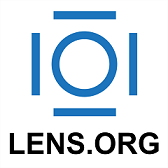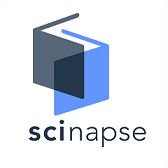Exposure to Social-Media HIV Testing Messages and HIV Self-Testing Among Young University Adults in Dar es Salaam, Tanzania: A Cross-Sectional Study
Abstract
Digital platforms have become an important tool for promoting public health interventions, including HIV prevention behaviours. In Tanzania, since 2022, the Ministry of Health, together with other stakeholders, has been promoting HIV self-testing (HIVST) messages under the “JIPIME” campaign, a Kiswahili term meaning “test yourself,” across various social media platforms to increase awareness and uptake among young people. However, little is known about the level of exposure to these messages among young adults and whether such exposure influences HIVST uptake. Therefore, this study assessed exposure to HIV testing content on social media and examined its association with HIVST uptake among university students aged 18–24 years in Dar es Salaam. To address this, an analytical cross-sectional study was conducted among adults aged 18–24 years from Kampala International University in Tanzania (KIUT) and the Dar es Salaam Institute of Technology (DIT). A total sample of 365 students was recruited using multistage cluster sampling, comprising 193 from DIT and 172 from KIUT. Data were collected using self-administered questionnaires. Descriptive statistics, including means, standard deviations, and percentages, were computed, while chi-square tests and multivariable logistic regression were used to examine associations between exposure to HIV testing content and HIVST uptake (p < 0.05, 95% CI). The study found that 52% (n = 191) of participants reported encountering HIV testing-related content on social media, while 48% had not. The overall uptake of HIV self-testing was 21%. Among those who had self-tested, 80% had been exposed to HIV testing content on social media. In the adjusted analysis, exposure was significantly associated with higher odds of ever self-testing (AOR = 12.0, 95% CI: 2.41–24.52, p < 0.01). Limited knowledge of how to use HIVST kits emerged as the main barrier to uptake. The findings demonstrate that exposure to HIV testing content on social media substantially influences HIVST uptake among young adults. Expanding targeted digital outreach and addressing knowledge gaps on the correct use of HIVST kits are critical strategies for improving uptake and advancing HIV prevention efforts among youth in Tanzania.
Downloads
References
Aloni, M. S. (2025). Drivers of HIV self-test kit among Tanzanian men aged 15–49: findings from the 2022 TDHS-MIS cross-sectional study. AIDS Research and Therapy, 22(1). https://doi.org/10.1186/s12981-024-00685-6
Dean, A., Sullivan, K., & Soe, M. (2013, April 6). OpenEpi: Open Source Epidemiologic Statistics for Public Health, Version. OpenEpi. www.OpenEpi.com, updated 2013/04/06
DIT. (2025). Our Programmes. Dar Es Salaam Institute of Technology. https://www.dit.ac.tz/academic/admission/programme
Dzinamarira, T., Muvunyi, C. M., Kamanzi, C., & Mashamba-Thompson, T. P. (2020). HIV self-testing in Rwanda: awareness and acceptability among male clinic attendees in Kigali, Rwanda: A cross-sectional survey. Heliyon, 6(3). https://doi.org/10.1016/j.heliyon.2020.e03515
Elorreaga, O. A., Torres, T. S., Hamid Vega-Ramirez, E., Konda, K. A., Hoagland, B., Benedetti, M., Pimenta, C., Diaz-Sosa, D., Robles-Garcia, R., Grinsztejn, B., Caceres, C. F., & Veloso, V. G. (2022). Awareness, willingness, and barriers to HIV Self-testing (HIVST) among Men who Have Sex with Men (MSM) in Brazil, Mexico, and Peru: A web-based cross-sectional study. PLOS Global Public Health, 2(7), 1–18. https://doi.org/10.1371/journal.pgph.0000678
Garett, R., Smith, J., & Young, S. D. (2016). A review of social media technologies across the global HIV care continuum. Current Opinion in Psychology, 9, 56–66. https://doi.org/10.1016/j.copsyc.2015.10.024
Hunter, L. A., Rao, A., Napierala, S., Kalinjila, A., Mnyippembe, A., Hassan, K., Bertozzi, S. M., Mfaume, R., Njau, P., Liu, J. X., & McCoy, S. I. (2023). Reaching Adolescent Girls and Young Women With HIV Self-Testing and Contraception at Girl-Friendly Drug Shops: A Randomized Trial in Tanzania. Journal of Adolescent Health, 72(1), 64–72. https://doi.org/10.1016/j.jadohealth.2022.08.013
Inwani, I., Chhun, N., Agot, K., Cleland, C. M., Rao, S. O., Nduati, R., Kinuthia, J., & Kurth, A. E. (2021). Preferred HIV Testing Modalities Among Adolescent Girls and Young Women in Kenya. Journal of Adolescent Health, 68(3), 497–507. https://doi.org/10.1016/j.jadohealth.2020.07.007
Kelvin, E. A., & Akasreku, B. (2020). The Evidence for HIV Self-Testing to Increase HIV Testing Rates and the Implementation Challenges that Remain. Current HIV/AIDS Reports, 17(4), 281–289. https://doi.org/10.1007/s11904-020-00504-3
Kemp, S. (2024). Digital 2024: Tanzania. https://datareportal.com/reports/digital-2024-tanzania
KIUT. (2025). Diploma Programmes. Kampala International University in Tanzania. https://kiut.ac.tz/admissions/diploma-programmes/
Mboussi, D. A. S., Lin, Y., Fornah, L., & Ma, W. (2023). Impact of Social Media Use on HIV Testing and Related Mediators among Men Who Have Sex with Men in Shandong Province, China. International Journal of Environmental Research and Public Health, 20(7). https://doi.org/10.3390/ijerph20075383
McGuire, M., de Waal, A., Karellis, A., Janssen, R., Engel, N., Sampath, R., Carmona, S., Zwerling, A. A., Suarez, M. F., & Pai, N. P. (2021). HIV self-testing with digital supports as the new paradigm: A systematic review of global evidence (2010–2021). EClinicalMedicine, 39, 101059. https://doi.org/10.1016/j.eclinm.2021.101059
Mcharo, R. D., Olomi, W., Mayaud, P., & Msuya, S. E. (2021). Risky sexual behaviors among young adults attending Higher Learning Institutions in Mbeya, Tanzania: implications for STIs and HIV preventive programs. AAS Open Research, 3. https://doi.org/10.12688/aasopenres.13123.2
Mokgatle, M. M., & Madiba, S. (2017). High acceptability of HIV self-testing among technical vocational education and training college students in Gauteng and North West Province: What are the implications for the scale-up in South Africa? PLoS ONE, 12(1), 1– 14. https://doi.org/10.1371/journal.pone.0169765
Muendo, N. K., Thigiti, J., Tembu, O., Mohamed, A., Audi, S., & Karanja, M. (2024). Exploring HIV Self-Testing: Barriers and Facilitators Among Undergraduate Students in Nairobi, Kenya. Annals of Family Medicine, 22(6), 502–508. https://doi.org/10.1370/afm.3169
NACP. (2018). National Accelerated Action Plan on HIV Testing Services. https://icap.columbia.edu/wp-content/uploads/ICAP_Approach_to_Strategic_HIV_Testing_20Julyl17.pdf
Nambi, W., Nabirye, R. C., Nakato, G., Aleni, M., & Epuitai, J. (2024). HIV self-testing and its associated factors among young university students: A cross-sectional study in a Public University in Uganda. https://doi.org/10.1101/2024.06.18.24309140
NASHCoP. (2022, August 13). HIV Self-Testing (Jipime) Wizara ya Afya Tacaids HQ Nacp Tanzania. Facebook. https://www.facebook.com/NACPFurahaYangu/videos/hiv-self-testing-jipimewizara-ya-afyatacaids-hqnacp-tanzaniatafadhali- tembelea- p/388443666756627/?_rdc=1&_rdr
Olakunde, B. O., Alemu, D., Conserve, D. F., Mak, M. O., Group, N. S., & Jennings, L. (2023). Awareness of and willingness to use oral HIV self-test kits among Kenyan young adults living in informal urban settlements : a cross- sectional survey. https://doi.org/10.1080/09540121.2022.2050176
Segawa, I., Bakeera-Kitaka, S., Ssebambulidde, K., Muwonge, T. R., Oriokot, L., Ojiambo, K. O., & Mujugira, A. (2022). Factors associated with HIV self-testing among female university students in Uganda: a cross-sectional study. AIDS Research and Therapy, 19(1), 1–8. https://doi.org/10.1186/s12981-022-00484-x
Shafik, N., Deeb, S., Srithanaviboonchai, K., Ayood, P., Malasao, R., Siviroj, P., Musumari, P. M., & Wood, M. M. (2021). Awareness and attitudes toward HIV self-testing in northern Thailand. International Journal of Environmental Research and Public Health, 18(3), 1–13. https://doi.org/10.3390/ijerph18030852
Smith, A., Agius, P., Dyson, S., Mitchell, A., & Pitts, M. (2003). Secondary students and sexual health 2002 : results of the 3rd National Survey of Australian Secondary Students, HIV/AIDS and Sexual Health. Australian Research Centre in Sex, Health & Society.
Suzuki, K., Ochiai, R., Opiyo, R. O., Tokunaga, Y., Imazu, Y., & Watabe, S. (2021). Gender differences in HIV testing service visits and their related factors among adults: a cross-sectional study in Homa Bay, Kenya. Pan African Medical Journal, 40. https://doi.org/10.11604/pamj.2021.40.217.28331
THIS. (2023). Tanzania HIV Impact Survey 2022-2023. https://www.nbs.go.tz/nbs/takwimu/THIS2022-2023/THIS2022-2023_Summary_Sheet.pdf
UNAIDS. (2020). Country progress report-United Republic of Tanzania Global AIDS Monitoring 2020. https://www.unaids.org/sites/default/files/country/documents/TZA_2020_countryreport.pdf
UNAIDS. (2024). 2024 global AIDS report — The Urgency of Now: AIDS at a Crossroads. https://www.unaids.org/sites/default/files/media_asset/2024-unaids-global-aids-update_en.pdf
UNAIDS. (2025a). Global HIV & AIDS statistics — Fact sheet. https://www.unaids.org/sites/default/files/2025-07/2025_Global_HIV_Factsheet_en.pdf
UNAIDS. (2025b). Global HIV Target Setting for 2030 — Global Task Team on 2030 Targets Recommendations — Live document as of 28 March 2025. http://www.wipo.int/amc/en/mediation/rules
Vara, P. A., Buhulula, L. S., Mohammed, F. A., & Njau, B. (2020). Level of knowledge, acceptability, and willingness to use oral fluid HIV self-testing among medical students in Kilimanjaro region, Tanzania: A descriptive cross-sectional study. AIDS Research and Therapy, 17(1), 1–10. https://doi.org/10.1186/s12981-020-00311-1
Wang, Y., Kinsler, J. J., & Kiwuwa-Muyingo, S. (2022). Factors associated with HIV testing among youth in Tanzania based on the 2016–2017 Tanzania HIV Impact Survey (THIS). PLOS Global Public Health, 2(11), e0000536. https://doi.org/10.1371/journal.pgph.0000536
Zeleke, E. A., Stephens, J. H., Gesesew, H. A., Gello, B. M., & Ziersch, A. (2024). Acceptability and use of HIV self-testing among young people in sub-Saharan Africa: a mixed methods systematic review. BMC Primary Care, 25(1), 369. https://doi.org/10.1186/s12875-024-02612-0
Zhao, R., Tao, Y., & Zhang, L. (2021). Can Social Media-Based Self-testing Be a New Paradigm for Human Immunodeficiency Virus Testing in China? Clinical Infectious Diseases, 73(7), E2258– E2260. https://doi.org/10.1093/cid/ciaa817
Copyright (c) 2025 Peter Abraham Kabelege, Saitoti Timoth, Mangi Job Ezekiel, Salim Juma Mpimbi, Idda Hubert Mosha

This work is licensed under a Creative Commons Attribution 4.0 International License.




























